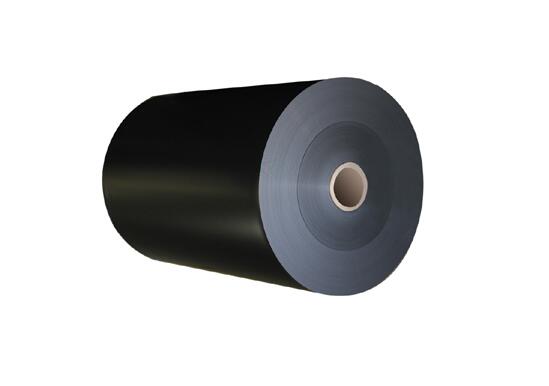High Density Polyethylene (HDPE), also known as low-pressure polyethylene, is a highly crystalline, semi-translucent, non-polar thermoplastic resin. PE exhibits excellent resistance to most household and industrial chemicals.
HDPE is a white, granular thermoplastic polymer that is non-toxic and odorless, with a density ranging from 0.940 to 0.976 g/cm³. It has a crystallinity of 80%–90%, a softening point of 125–135°C, and can be used at temperatures up to 100°C. The melting point is between 120–160°C; for materials with higher molecular weight, the recommended processing temperature is 200–250°C. HDPE offers excellent thermal resistance, low-temperature toughness, and chemical stability, along with good rigidity, impact strength, and dielectric properties. It also has good resistance to environmental stress cracking.
Compared to LDPE (Low Density Polyethylene), HDPE has superior hardness, tensile strength, and creep resistance. While its wear resistance, insulation, and toughness are better than LDPE, its gloss and flexibility are slightly inferior. HDPE is highly chemically stable, insoluble in any organic solvent at room temperature, and resistant to acids, alkalis, and salts. Its films have low permeability to water vapor and air and low water absorption. However, HDPE has relatively poor aging resistance and environmental stress cracking resistance, particularly under thermal oxidation. Therefore, antioxidants and UV stabilizers are typically added to improve these weaknesses.
One key consideration is that HDPE films have a relatively low heat distortion temperature under load.
Material Characteristics
- Full Name: High Density Polyethylene
- Abbreviation: HDPE
- Monomer: Ethylene
- Basic Characteristics:
HDPE is an opaque, white, waxy material that is lighter than water (specific gravity: 0.941–0.960). It is soft, tough, slightly harder than LDPE, and stretchable. It is non-toxic and odorless. - Combustion Properties:
Flammable, continues to burn after ignition. Flame is yellow at the top and blue at the base, melts while burning with dripping but without black smoke, emitting a paraffin-like odor. - Key Advantages:
Excellent resistance to acids, alkalis, and organic solvents. Outstanding electrical insulation. Maintains toughness at low temperatures. Higher surface hardness, tensile strength, and stiffness than LDPE, closer to PP (polypropylene). More flexible than PP, though less glossy. - Main Disadvantages:
Inferior mechanical performance and gas barrier properties. Prone to deformation, aging, brittleness (though better than PP in this regard), and stress cracking. Soft surface easily scratched. Poor printability—requires corona treatment. Cannot be electroplated and has a dull surface.
Anwendungen
- Extrusion: Packaging films, ropes, woven bags, fishing nets, water pipes.
- Injection Molding: Low-end daily necessities, housings, non-load-bearing parts, crates, turnover boxes.
- Blow Molding: Containers, hollow parts, bottles.
- Film Blowing: Food packaging bags, shopping bags, fertilizer liners, etc.
- Rotational Molding: Large containers, storage tanks, drums, boxes.
Injection Molding Process
HDPE is widely used in injection molding—from reusable thin-walled beverage cups to 5-gallon drums. It accounts for about 20% of domestic HDPE consumption. Grades for injection molding typically have a melt index of 5–10, ranging from lower flow toughness grades to higher flow processable grades. Applications include:
- Thin-walled containers for household and food use
- Tough, durable paint and food cans
- Fuel tanks for small engines
- 90-gallon garbage bins
- Typical Melting Point: 142°C
- Decomposition Temperature: 300°C
- Injection Molding Temperature Range: 180°C–230°C
- Drying: Not necessary due to low water absorption, but drying at 60°C for 1 hour can improve quality
- Melt Viscosity: High; runners and gates should be relatively large
- Shrinkage: ~1.6%
- Flash Tolerance: 0.05 mm
- Static Buildup: Prone to dust attraction due to static
HDPE Product Properties
HDPE is a non-toxic, tasteless, and odorless white pellet, with a melting point of 130°C and a relative density of 0.946–0.976 g/cm³. It is known for:
- Excellent heat and cold resistance
- Chemical stability
- High rigidity and toughness
- Strong mechanical properties
- Good dielectric performance
- Resistance to environmental stress cracking
Main Applications by Processing Method
- Injection Molding:
- Turnover boxes, caps, barrels, food containers, trays, bins, flower pots
- Blow Molding:
- Containers and bottles for cleaning agents, chemicals, cosmetics, gasoline tanks, household products
- Blown films for food packaging, shopping bags, fertilizer liners
- Extrusion:
- Pipes and fittings for gas, water, and chemical transportation (e.g., drainage, gas, hot water)
- Sheets for seats, suitcases, transport containers
- Rotational Molding:
- Large containers, tanks, barrels, storage boxes
- Other Uses:
- Films, wire and cable sheaths, tubing, hollow products, fibers
- Widely applied in agriculture, packaging, electronics, machinery, automotive, and daily goods
Our Company’s HDPE and Engineering Plastic Sheet Offerings
We specialize in the production of high-quality HDPE sheets, ABS co-extruded sheets, TPU sheets, TPV sheets, TPEE sheets, PP sheets, HIPS sheets, and ABS laminated TPU sheets (in thick plate or roll form). Customizations are available to meet requirements such as:
- Flame retardancy
- UV resistance
- EV resistance
- Conductivity
- Anti-static properties
- Cold resistance and abrasion resistance
- Color options
- Roll form or thick plate specifications
Production Capabilities:
- Maximum Thickness: up to 13 mm
- Minimum Thickness: 0.8 mm
- HDPE Roll Thickness: up to 8 mm
- ABS Roll Thickness: up to 4 mm
- Width (HDPE/PP/PS): up to 2.3 meters
- Width (ABS): up to 1.9 meters
- All products available with cold resistance up to -30°C
Anwendungsgebiete:
- Automotive parts
- Medical devices
- RV interiors
- Ice boxes
- Car travel cases
- Electroplating boards
- Engraving boards
- Printing boards
- Thermoformed trays
- Turnover containers












